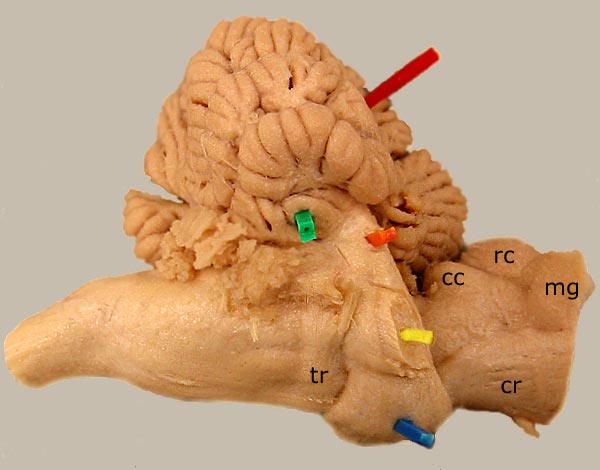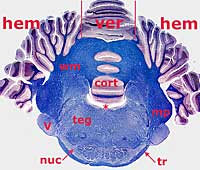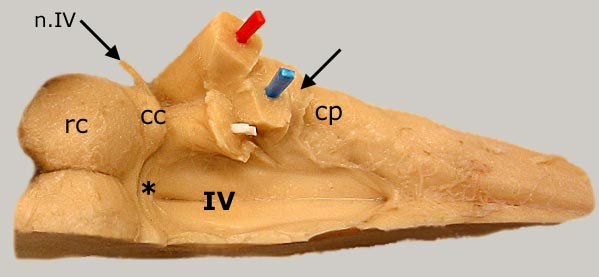The metencephalon has two major components: pons and cerebellum.

Pons: The pons is part of the brainstem. It contains the rostral end of the fourth ventricle and gives rise to the trigeminal nerve. The pons has distinct ventral and dorsal parts.
The ventral surface of the pons features bulging transverse pontine fibers (which give the pons its name: pons = bridge). The transverse pontine fibers become the middle cerebellar peduncle. The ventral pons also includes pontine nuclei located immediately dorsal to the transverse pontine fibers. Neurons comprising pontine nuclei give rise to transverse pontine fibers.

The dorsal part of the pons, known as pontine tegmentum, extends from the ventral pons to the fourth ventricle. The fourth ventricle has a thin roof called rostral medullary vellum (trochlear nerve fibers decussate in the medullary vellum). The trigeminal nerve pierces transverse pontine fibers as the nerve exits the brainstem.
Cerebellum: The cerebellum is divided into a median region, termed the vermis, and bilateral cerebellar hemispheres. The cerebellar surface is partitioned into folia (folium = ridge) separated by sulci (sulcus = groove).
Histologically, the cerebellum consists of superficial gray matter, called cerebellar cortex, and deep cerebellar white matter that contains embedded cerebellar nuclei. The cerebellum communicates with the rest of the brain via fibers organized into three cerebellar peduncles, named for their connection location in the brainstem: rostral, middle, and caudal.
